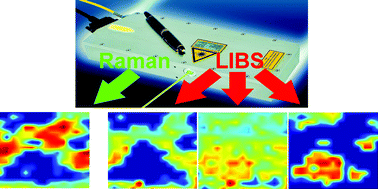Assessment of suitability of diode pumped solid state lasers for laser induced breakdown and Raman spectroscopy
Abstract
The potential of a diode pumped solid state (DPSS) laser for laser induced breakdown

* Corresponding authors
a
BAM Federal Institute for Materials Research and Testing, Richard-Willstaetter Str. 11, Berlin, Germany
E-mail:
igor.gornushkin@bam.de
Fax: +49 30 8104 1147
Tel: +49 30 8104 1141
b Humboldt Universitaet zu Berlin, Chemistry Department, Brook-Taylor-Strasse 2, Berlin, Germany
The potential of a diode pumped solid state (DPSS) laser for laser induced breakdown

 Please wait while we load your content...
Something went wrong. Try again?
Please wait while we load your content...
Something went wrong. Try again?
M. Hoehse, I. Gornushkin, S. Merk and U. Panne, J. Anal. At. Spectrom., 2011, 26, 414 DOI: 10.1039/C0JA00038H
To request permission to reproduce material from this article, please go to the Copyright Clearance Center request page.
If you are an author contributing to an RSC publication, you do not need to request permission provided correct acknowledgement is given.
If you are the author of this article, you do not need to request permission to reproduce figures and diagrams provided correct acknowledgement is given. If you want to reproduce the whole article in a third-party publication (excluding your thesis/dissertation for which permission is not required) please go to the Copyright Clearance Center request page.
Read more about how to correctly acknowledge RSC content.
 Fetching data from CrossRef.
Fetching data from CrossRef.
This may take some time to load.
Loading related content
